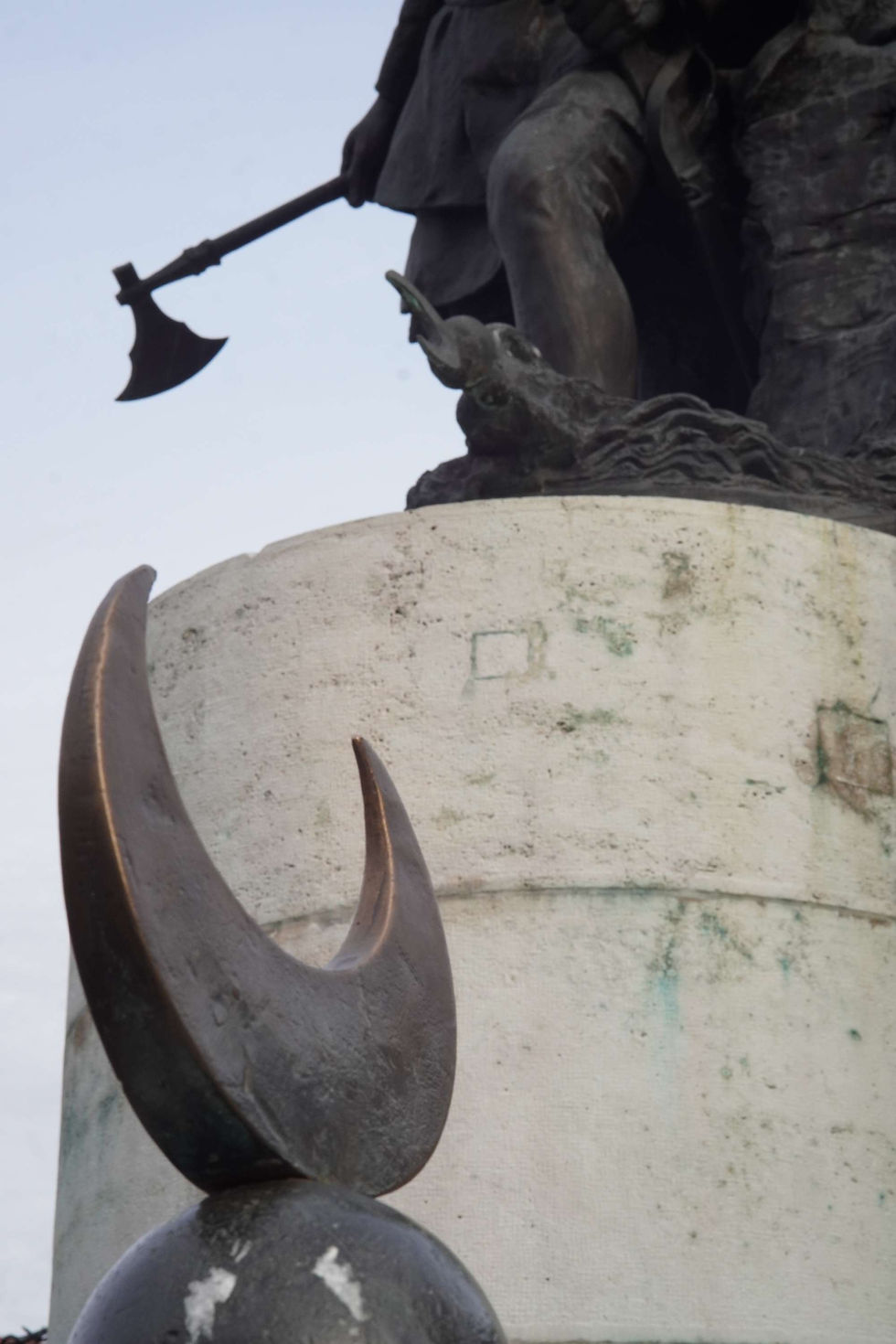Hunting The Remains of Islamic Rule in Hungary
- Haris T
- Feb 5, 2024
- 3 min read
Updated: Feb 8, 2024
(Audio Narration)

The Haji Ibrahim Mosque - one of the most northern Mosques ever constructed. Peering out towards central Europe, sitting on the edge of the river that separates Hungary and Slovakia. Almost as if the mosque is frozen in an intense stare down with Europe that has lasted 4 centuries. This mosque stands as one of the few remnants of the forgotten Ottoman Islamic rule in Hungary.

Sultan Suleiman the Magnificent, one of the greatest Sultan of the Ottoman Empire, is credited with the tale of the Ottomans and Hungary. An exceptional statesman, a formidable general, a talented poet and a feared opponent. Rather than treating Hungary as a far distant land, Suleiman made it his life ambition to carry the Ottoman banner to the furthest point any Sultan had and would ever reach. He personally led his armies against Vienna three times and against Hungary seven times.
Following the battle of Mohacs in 1526, a pivotal date in which Suleiman brought the kingdom of Hungary to its knees. It was the quickest large scale war in history. Amongst the fighters were great figures of the Ottomans, including Gazi Huzrev Bey, the governor of Bosnia.

In 1541, Suleiman eventually marched triumphantly into Budapest, the capital city which for the next century would witness the development of 67 Mosques and 16 Hammams that would dominate the skyline. From the very castle hill that today tourists from across the globe visit, Sultan Suleiman ruled over Buda. In commemoration of his victory, Budapest's main church held the first Friday prayer in Hungary’s history. There, on the pulpit, Suleiman praised God for the victory.

In 1566, despite his old age, Suleiman would embark on yet another campaign to Szigetvar - Hungary, but this time it would be his last. Mere hours before the news of the Muslim triumph reached, Suleiman departed from this world on the very territory he had devoted his life to. While his body was safely taken back to Istanbul to prevent it from defilement, his internal organs remain buried on those very fields. Suleiman the great, the magnificent had left his heart behind in Hungary, both physically and symbolically.

Although short lived, the Ottomans gave this region 150 memorable years. Which till today is viewed by many Hungarians in a nostalgic manner despite the Ottomans having ruled over them. While true many Churches turned into mosques, this was purely political. Instead, Ottoman rule was benevolent in allowing Religious freedom, even permitting protestants, which hitherto were oppressed by Catholics, to practice their faith. They had done what very few empires had achieved in the past. In the footsteps of the Romans and the great Mongol empire, the Ottomans had seasoned these lands with Imperial majesty and splendid architecture that are still visible to the vigilant eye.
Had it not been for this very fact alone that the Ottoman traces could still be found in Hungary, the cities that might have seemed random and meaningless to me, now hold a unique sense of familiarity. In 4 days I traversed seven cities to hunt for these lost and decaying relics that will soon be published as a documentary film. But rather than visiting these cities, I had visited an era, a long-gone era.

Although by 1686 the Ottomans had packed their bags never to return to Hungary again, these time capsules stayed behind. Far from home and far from their time. From lonely minarets to warm Turkish baths and Mosques that were converted into Churches. The bittersweet feeling of both marvelling at the unimaginable Muslim expansion, but also feeling an aching absence in the ruins of mosques.

These mosques may never return to their original usage again, but there’s something truly poetic about these spaces. These irregular spaces that don’t conform with their surroundings. Almost as if being here in these old Ottoman mosques, confined within these walls, is like being stuck in limbo. A past that only continues to live within these walls. One step outside, brings me straight back to the present. A holy realm that transcends time. A subtle hint, a reminder or even a trophy if you will, of a grandiose empire.
En route to Hungary, a sense of euphoria overwhelmed me. It was as though I had traced the footsteps of the Ottomans, journeying to these far away cities like I was accompanying them on their campaigns. But now as I journey back home, I’m filled with remorse. I feel defeated. I feel as though I too have now followed the Ottomans in their retreat. Journeying back through the same flat fields that hosted the greatest battles in history. And as the sun makes its final appearance on the horizon as I glance out of the window of the plane, it marks the symbolic end. An end to the glory, the magnificence and the era of the Ottomans.




Comments